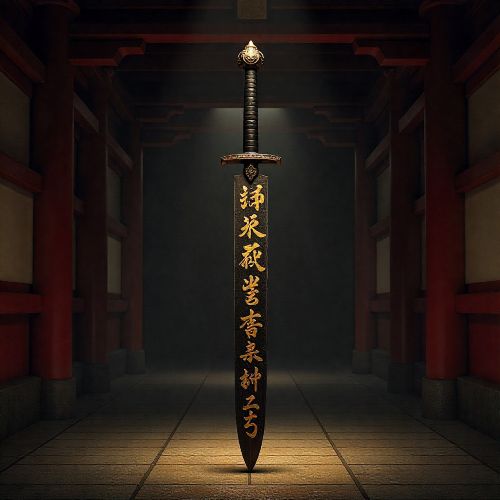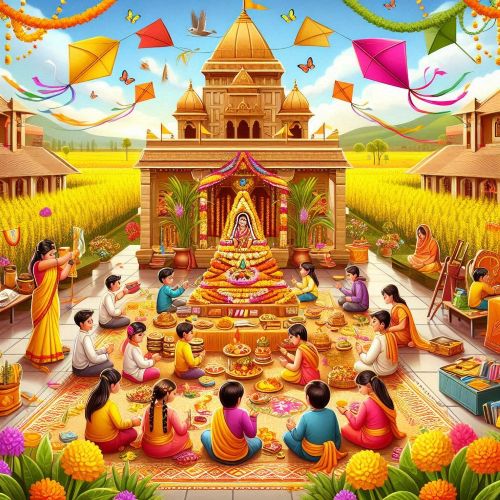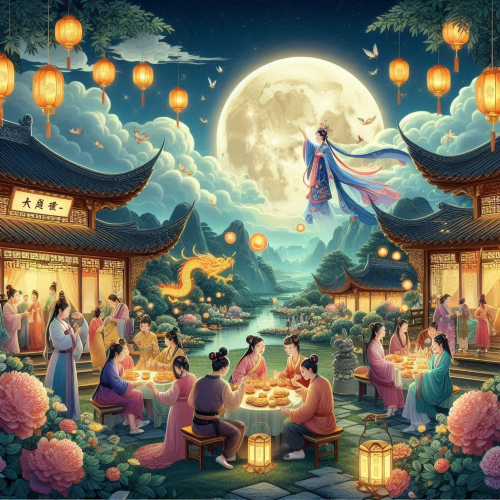Tet : The Spring Awakening
At a glance
| Description | |
|---|---|
| Location | Hanoi, Ho Chi Min City |
| Country | Vietnam |
| Dedicated To | Ancestors |
| Duration | 5-7 days |
| Time of Year | February |
Introduction
Tet, formally known as Tết Nguyên Đán, is more than Vietnam’s New Year celebration—it’s a spiritual reset and a cultural rebirth. Rooted in lunar cycles and agricultural rhythms, Tet marks the end of the old year and welcomes the arrival of spring. It isn’t just a time for parties or seasonal changes; it is a deeply embedded cultural event that reflects Vietnam’s profound connection to nature, mythology, and ancestral legacy. The essence of Tet lies in the symbolic restoration of balance between humans and the divine, between the past and the present. Its rituals and stories serve as cultural memory, offering a moment where myth and modern life harmoniously intersect.
Connection with Mythology
Mythological stories are at the core of Tet’s enduring customs. Each ritual has roots in tales passed down through generations, many of which elevate Tet from seasonal festivity to spiritual rite.
One central myth revolves around Táo Quân, the Kitchen Gods—three household deities who ride on carps to heaven every year before Tet to report the family’s behavior to the Jade Emperor. Families honor their departure by releasing live fish in rivers, symbolizing spiritual connection and the hope for favorable judgment.
The myth of Lạc Long Quân and Âu Cơ, believed to be the ancestors of the Vietnamese people, gives Tet a foundational purpose. According to legend, their union produced one hundred children who dispersed to populate the land. This story emphasizes unity and familial loyalty—principles reinforced during Tet through ancestral rites and family gatherings.
The practice of lễ cúng tổ tiên, or ancestor worship, brings these legends to life. Families prepare home altars with offerings of food, flowers, and incense to welcome ancestral spirits back into the household. This tradition blurs the boundary between myth and reality, transforming Tet into a sacred reunion between the living and their forebears.
Main Activities
The customs practiced during Tet carry symbolic significance, many of which trace back to Vietnam’s rich mythological past. Households undergo meticulous cleaning not only to welcome the new year but also to cleanse spiritual energy, ridding the home of lingering negativity.
The release of carp into rivers symbolizes the ascent of the Kitchen Gods and references ancient myths where carp transformed into dragons, symbolizing perseverance and transcendence. By enacting this ritual, families participate in a timeless narrative of transformation and renewal.
The tradition of gifting lì xì, red envelopes filled with money, serves more than just a material function. Red, in East Asian mythologies, is known to ward off evil spirits. The act becomes a way to transfer not just luck, but spiritual protection, from one generation to the next.
Making and offering bánh chưng and bánh tét—square and cylindrical rice cakes—connects families to the legend of Lang Liêu, a prince who created these offerings to honor the Earth and sky. Their preparation is a form of mythological storytelling passed down through taste and touch.
The custom of xông đất, choosing the first guest of the new year carefully, reflects the belief that spiritual energy can be influenced by human presence. It suggests that fortune in the coming year is partly guided by divine will and partly by earthly virtue.
Each of these activities transforms Tet into more than celebration—they make it a living performance of Vietnam’s mythological heritage.
Importance in Cultural History
Tet has long served as the heart of Vietnamese cultural and spiritual life. Though it predates Vietnam’s modern nationhood, its core values have remained remarkably consistent. Rooted in ancient agrarian cycles, Tet marks the conclusion of a harvest and the anticipation of spring growth. These natural rhythms parallel mythological stories of death, dormancy, and renewal.
In more recent history, Tet became globally recognized during the Vietnam War, particularly the Tet Offensive of 1968. Despite this political association, the festival’s cultural and spiritual essence endured, symbolizing unity, resilience, and the continuation of tradition under adversity.
Traditional arts and performances, such as hát chèo, múa lân, and seasonal games, are revitalized each Tet. These artistic expressions are not just entertainment—they’re myth in motion, carrying forward values of community, respect, and storytelling.
Tet’s regional variations also demonstrate the celebration’s adaptability. Northern, Central, and Southern Vietnam all observe Tet differently, yet each retains its mythological and ancestral core. Whether through unique dishes or specific temple rituals, these distinctions form a rich national mosaic, united by shared spiritual symbolism.
International Appeal
Tet’s mythological and cultural richness has found new expressions beyond Vietnam’s borders. With millions in the Vietnamese diaspora, Tet celebrations have flourished in communities around the world, evolving in form but not in essence.
In the United States, cities like San Jose, Westminster, and Houston host Tet festivals that include dragon dances, fireworks, and cultural exhibits. These events serve both to preserve cultural identity and to introduce Tet’s mythological heritage to new generations and global audiences.
Paris and other European cities have adapted Tet festivities, sometimes blending them with local springtime customs. These hybrid celebrations highlight the universal appeal of Tet’s core themes—renewal, family, and reverence for the unseen.
Australia’s Tet festivals are often held in collaboration with Indigenous communities, offering a unique opportunity to merge Vietnamese myth with Aboriginal views on seasonal cycles and ancestral veneration.
In the digital age, Tet has also embraced technology. Virtual Tet rituals, livestreamed temple ceremonies, and social media storytelling now connect the Vietnamese diaspora with their homeland’s traditions. These platforms turn Tet into a global event, where myth and memory travel across screens, preserving cultural roots while fostering innovation.
Source
Heritage Vietnam Airlines. (2021, January 20). The legend of the Tet plants. Retrieved from https://heritagevietnamairlines.com/en/the-legend-of-the-tet-plants/
Le, C. N. (2006). Tet, A celebration of rebirth. Asian-Nation. Retrieved from https://www.asian-nation.org/tet.shtml
Vietcetera. Tet Holiday: The Age-Old Tradition Explained. Retrieved from https://vietcetera.com/en/tet-holiday-the-age-old-tradition-explained
Rosamia Hotel. (2025, January 5). About traditions of Tet, the Vietnamese Lunar New Year. Retrieved from https://rosamiahotel.com/en/-65/all-about-traditions-of-tet-the-vietnamese-lunar-new-year.html
Vinpearl. (2024, October 28). Tet holiday: Guide to understand the heart of Vietnamese traditions. Retrieved from https://vinpearl.com/en/tet-holiday-a-complete-guide-to-the-most-important-festival
Asian-Nation. (2006). Têt, A Celebration of Rebirth. Retrieved from https://www.asian-nation.org/tet.shtml
Vietnam Law Magazine. (2025, January 28). Significance of Tet. Retrieved from https://vietnamlawmagazine.vn/significance-of-tet-73445.html
Frequently Asked Questions
Lorem ipsum dolor sit amet, consectetur adipiscing?
Lorem ipsum dolor sit amet, consectetur adipiscing elit. Praesent convallis vestibulum justo, ac tincidunt nunc vehicula quis. Nullam id dolor quis orci malesuada feugiat. Curabitur aliquet libero at urna ullamcorper, ac ultricies nulla dapibus.
Lorem ipsum dolor sit amet, consectetur adipiscing?
Lorem ipsum dolor sit amet, consectetur adipiscing elit. Praesent convallis vestibulum justo, ac tincidunt nunc vehicula quis. Nullam id dolor quis orci malesuada feugiat. Curabitur aliquet libero at urna ullamcorper, ac ultricies nulla dapibus.
Lorem ipsum dolor sit amet, consectetur adipiscing?
Lorem ipsum dolor sit amet, consectetur adipiscing elit. Praesent convallis vestibulum justo, ac tincidunt nunc vehicula quis. Nullam id dolor quis orci malesuada feugiat. Curabitur aliquet libero at urna ullamcorper, ac ultricies nulla dapibus.
Lorem ipsum dolor sit amet, consectetur adipiscing?
Lorem ipsum dolor sit amet, consectetur adipiscing elit. Praesent convallis vestibulum justo, ac tincidunt nunc vehicula quis. Nullam id dolor quis orci malesuada feugiat. Curabitur aliquet libero at urna ullamcorper, ac ultricies nulla dapibus.
Lorem ipsum dolor sit amet, consectetur adipiscing?
Lorem ipsum dolor sit amet, consectetur adipiscing elit. Praesent convallis vestibulum justo, ac tincidunt nunc vehicula quis. Nullam id dolor quis orci malesuada feugiat. Curabitur aliquet libero at urna ullamcorper, ac ultricies nulla dapibus.









